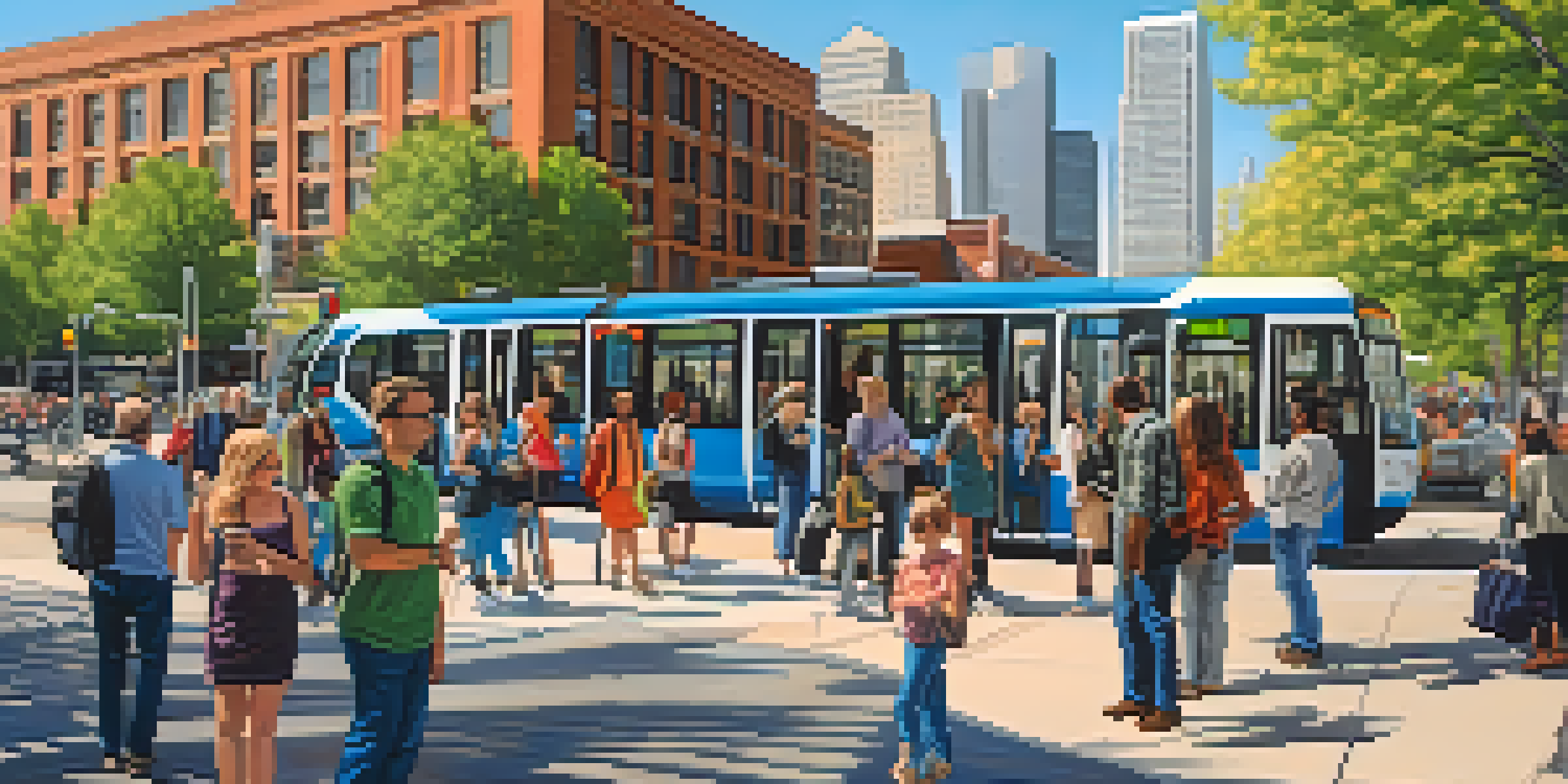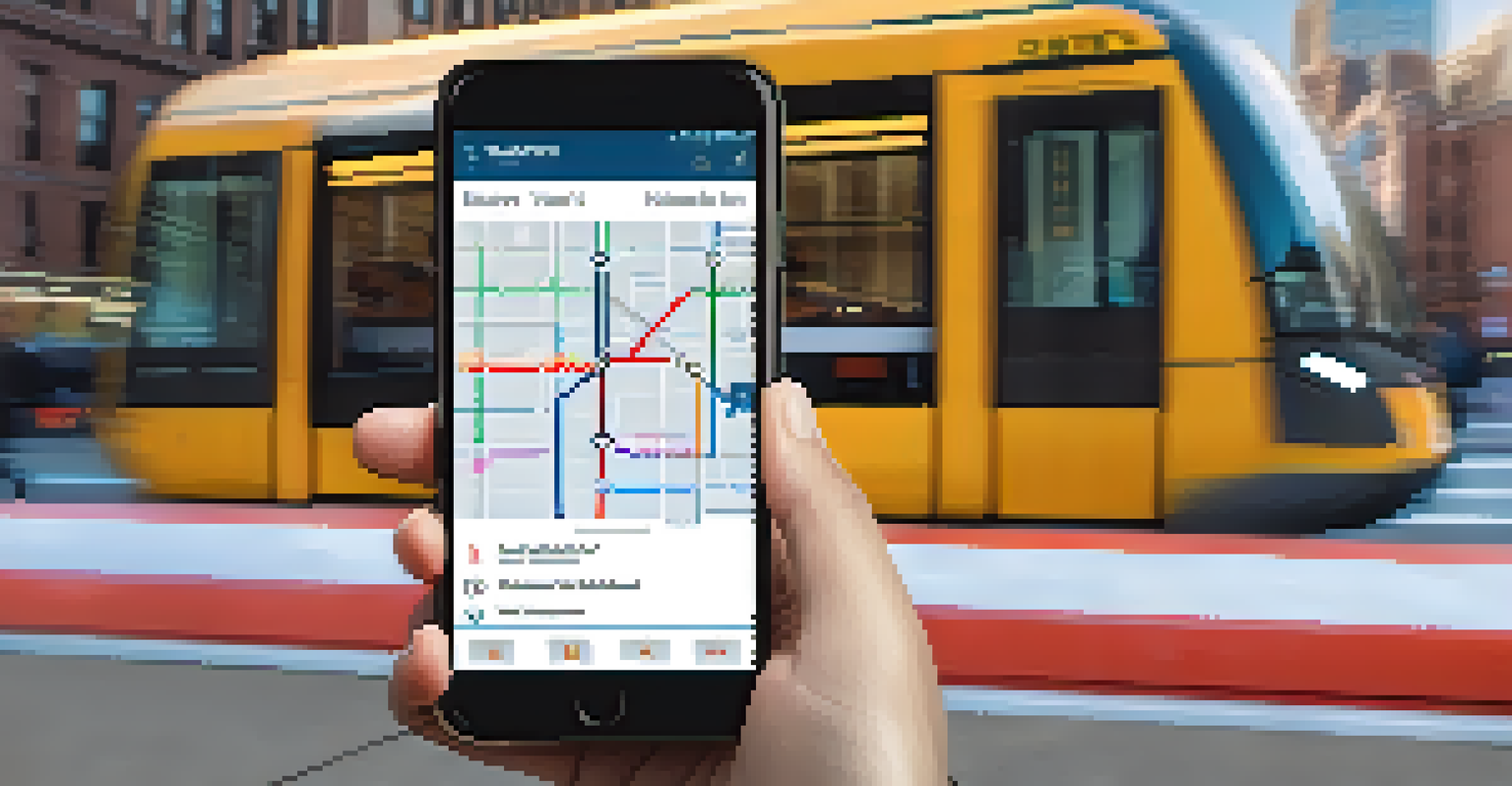Community Feedback on Denver's Public Transit Expansion

Understanding the Public Transit Expansion Project
Denver's public transit expansion aims to enhance connectivity across the city. This project is designed to extend existing light rail lines and introduce new bus routes, making it easier for residents to access essential services. By improving public transit, the city hopes to reduce traffic congestion and promote sustainable travel options.
Public transportation is about more than just getting from point A to point B; it's about connecting people to opportunities and creating a vibrant community.
The expansion is part of a broader effort to support Denver's growing population and urban development. As the city continues to evolve, the need for efficient transportation becomes increasingly critical. This project not only addresses current needs but also anticipates future demands as Denver continues to attract new residents and businesses.
Community involvement is a key aspect of the project’s success. By gathering feedback from residents, city planners aim to create a transit system that truly meets the needs of its users, ensuring that everyone can benefit from these improvements.
Community Engagement: Gathering Feedback
To better understand community needs, Denver’s transit authorities have organized various engagement initiatives. These include public meetings, online surveys, and focus groups, allowing residents to voice their opinions on the proposed changes. Engaging the community is vital for creating a system that reflects the diverse needs of its users.

Feedback sessions have revealed a mix of excitement and concern among residents. While many are eager to see improved transit options, others express worries about potential disruptions during construction. Addressing these concerns early on can help foster a sense of collaboration between the city and its residents.
Community Engagement is Key
Denver's transit authorities are actively involving residents to gather feedback and address concerns about the public transit expansion.
The city has also encouraged residents to share their experiences with public transit through social media platforms. This open dialogue not only strengthens community ties but also provides valuable insights that can guide decision-making throughout the project.
Key Concerns from Denver Residents
As with any large infrastructure project, community feedback has highlighted several key concerns. One major issue is the potential for increased traffic congestion during construction phases. Residents worry that road closures and detours could complicate their daily commutes and affect local businesses.
The best way to predict the future is to create it.
Additionally, some community members have expressed concerns about the accessibility of new transit options. Ensuring that all residents, including those with disabilities, can easily access public transportation is crucial for the project's success. City planners must prioritize inclusivity to ensure everyone benefits from the expansion.
Safety is another significant aspect that residents have raised. Many want assurance that the new transit lines will be safe and well-lit, particularly in underserved neighborhoods. Addressing these concerns head-on can help build trust and promote the project among skeptical residents.
Positive Feedback: Anticipation and Hope
Despite the concerns, many residents are optimistic about the public transit expansion. They see it as a step toward creating a more connected and vibrant Denver. Improved public transit can lead to increased economic opportunities, making the city more attractive to businesses and new residents alike.
Some community members have shared their excitement about the potential for reduced travel times. With improved transit options, they hope to spend less time in traffic and more time enjoying what Denver has to offer, from local parks to cultural attractions.
Concerns Over Construction Impact
Residents have expressed worries about increased traffic congestion and accessibility issues during the construction phases of the transit expansion.
Moreover, the environmentally conscious appreciate the project's focus on sustainability. By promoting public transit over personal vehicle use, the city can reduce its carbon footprint and contribute to a healthier planet.
The Role of Technology in Transit Expansion
Technology plays a pivotal role in the public transit expansion project. From GPS tracking systems to real-time updates on transit schedules, advancements in technology can enhance the overall user experience. Residents are eager to see how these innovations will be integrated into the new transit system.
Additionally, mobile applications are being developed to make it easier for riders to plan their journeys. These tools aim to provide users with the most efficient routes, helping them navigate the public transit system with ease. Such features can significantly improve accessibility for those unfamiliar with the existing transit options.
Community feedback has also emphasized the importance of digital literacy in ensuring that all residents can benefit from these technological advancements. Providing resources and training can help bridge the gap for those who may struggle to navigate new apps or websites.
Building Partnerships for a Successful Project
Successful public transit expansion requires collaboration among various stakeholders. City officials, transit authorities, community organizations, and residents must work together to ensure that the project meets its goals. Building strong partnerships can facilitate better communication and smoother implementation of the expansion.
Local businesses are particularly important partners in this initiative. By engaging with them early on, city planners can address concerns about potential disruptions and explore ways to collaborate during the construction process. Supporting local businesses can create a win-win situation for everyone involved.
Technology Enhances User Experience
The integration of technology in the transit expansion aims to improve accessibility and efficiency for all users.
Furthermore, partnerships with advocacy groups can help ensure that marginalized voices are heard throughout the planning process. These organizations can provide valuable insights and help promote inclusivity, ensuring that the expansion benefits the entire community.
Looking Ahead: Future of Public Transit in Denver
As the public transit expansion project moves forward, the community’s feedback will play a vital role in shaping its future. The insights gathered from residents will not only inform the current project but also guide future transportation initiatives in Denver. This ongoing dialogue can lead to a more adaptive and responsive transit system.
Moreover, residents are encouraged to stay engaged even after the project’s completion. Continued community involvement can help identify further areas for improvement and ensure that the transit system evolves with the city’s needs. A proactive approach can foster a culture of collaboration and innovation.

In summary, the future of public transit in Denver looks promising, thanks to the active participation of its residents. Together, the city and its community can create a transit system that is efficient, accessible, and sustainable for generations to come.